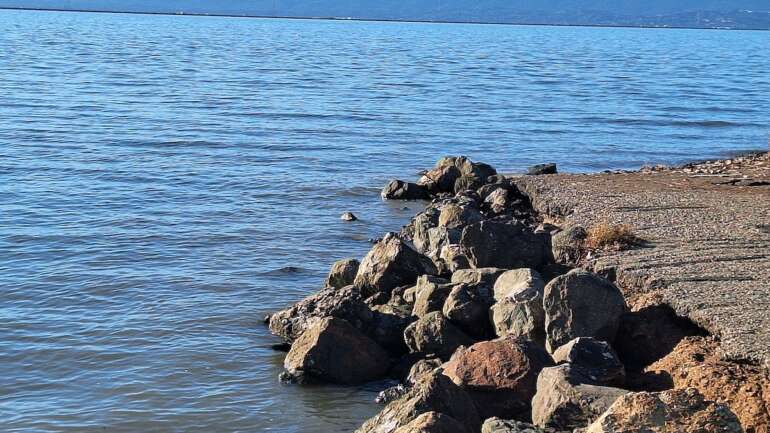Newark could address the housing and climate crises simultaneously by building resilient homes. But the city’s current plan continues to prioritize development of Newark’s shoreline, putting 469 single-family homes in a flood zone on a site scientists have urged be protected and restored to wetlands.
This is not a regular shoreline housing proposal. Newark plans to pave over a 500-acre mosaic of undeveloped marshland and wildlife habitat along San Francisco Bay. The development, on a site known as “Sanctuary West” or Newark Area 4, would need over 100,000 truckloads to bring in 1.67 million cubic yards of fill. Area 4 is entirely within a FEMA flood zone that already is pumped annually to reduce flooding and is anticipated to be nearly completely inundated by sea-level rise in the near future.
The project is contained in the city’s draft Housing Element, the guiding document for how to develop over the next decade. The city has missed the January deadline for state certification of the document, which includes plans for 1,874 new housing units across the city.
Tonight, Newark city staff are hosting the only public meeting to solicit feedback on a draft of the Housing Element. The recently released document contains many good policies and identified sites other than Area 4 that could create the dense infill development in existing communities that Newark needs.
But environmental and housing organizations agree that Newark Area 4 is not a wise place to build housing. These lands have been prioritized for decades by the conservation community for wetland restoration and inclusion in the refuge, but city officials have chosen to ignore the scientific evidence that building here would put current and future Newark residents at flood risk. Almost entirely in a flood zone and with regular flooding during the winter rainy season, the site is expected to be permanently inundated by 1 meter of sea level rise.
Area 4 supports dozens of bay wildlife species, including the endangered salt marsh harvest mouse, thousands of resident and annual migratory shorebirds and waterfowl, and the upper reaches of the tidal Mowry Slough.
The good news for the city is that it doesn’t need to develop the shoreline to meet its housing needs. In fact, Newark has an opportunity to build a vibrant, climate-resilient city by focusing on infill development.
It could utilize existing neighborhoods and major development opportunities such as revitalizing NewPark Mall, which could provide 1,519 housing units, and smaller projects already planned in and around Old Town Newark. Building in these developed areas would help place housing near job centers, reducing vehicle miles traveled and road congestion. Allowing more density, lowering off-street parking requirements (no more than one per two units) and other housing-friendly changes beyond that in the Housing Element would speed the development of this badly needed infill.
In an era of climate change, as we anticipate sea levels rising by as much as 7 feet by 2100 and as we work to reduce our carbon emissions as quickly as possible, we can build resilient communities in existing neighborhoods near shops, jobs and transit and protect undeveloped open space areas that face environmental hazards such as flooding and fires.
There are very few undeveloped wetlands around the Bay Area — that makes this site even more critical to protect. There is still time for the city to change course and preserve these threatened wetlands.
We urge Newark officials to plan for a climate-forward city and turn away from developing the Newark Area 4 shoreline, instead focusing on infill growth in existing neighborhoods. The whole region is watching.
———-
(View original opinion piece, published in the East Bay Times on March 22, 2023)
Zoe Siegel is the senior director of climate resilience at Greenbelt Alliance. Maxwell Davis is a steward with East Bay for Everyone.




